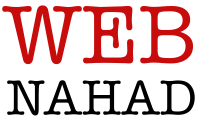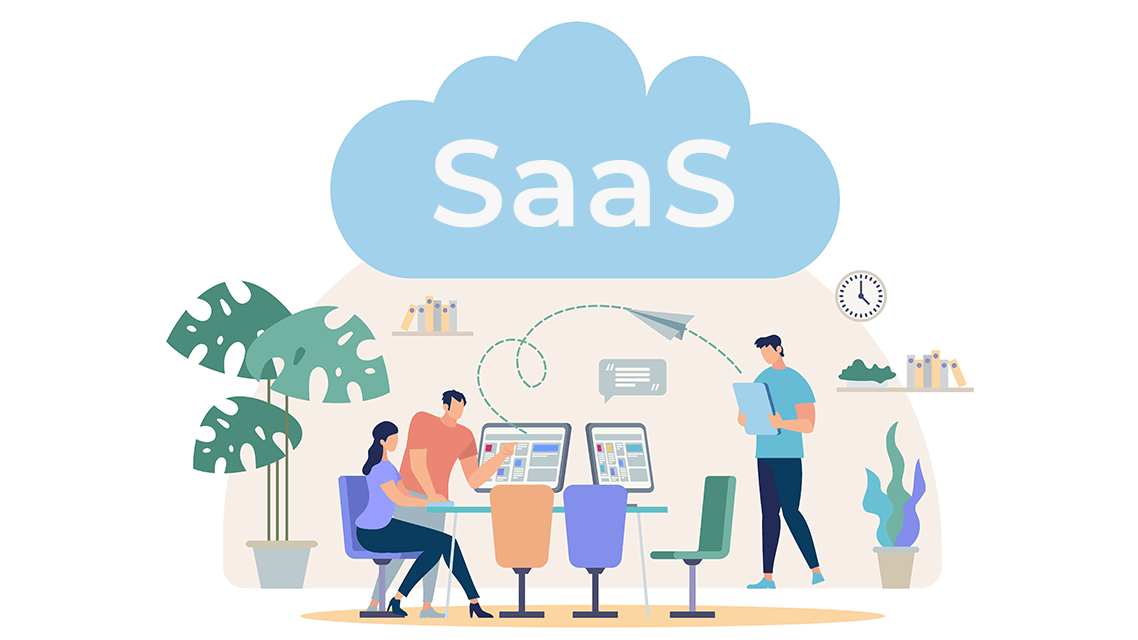First of all – What is SaaS ???
SaaS stands for “Software as a Service.” It is a cloud computing model in which software applications are delivered over the internet on a subscription basis. Rather than installing software on individual computers or servers, users can access and use the software through a web browser.
In the SaaS model, the software provider hosts and maintains the software infrastructure, handles software updates and upgrades, and manages security and availability. Users typically pay a recurring subscription fee to access and use the software, often based on factors such as the number of users or the level of usage.
SaaS offers several advantages over traditional software models:
- Accessibility: Users can access the software from any device with an internet connection, enabling remote and mobile work.
- Scalability: SaaS solutions can easily scale up or down based on user needs, allowing businesses to adjust their usage and costs accordingly.
- Lower upfront costs: Instead of purchasing and maintaining software licenses and infrastructure, users pay a subscription fee, which can be more cost-effective, particularly for small businesses.
- Maintenance and updates: The software provider handles maintenance, updates, and security, relieving users from these responsibilities.
- Rapid deployment: SaaS applications can be quickly deployed since they are already hosted in the cloud, eliminating the need for extensive installation processes.
SaaS has become popular across various industries and applications, ranging from project management and customer relationship management to human resources and accounting.
How to generate profit from SaaS businesses?
There are several ways to generate profit from SaaS businesses. Here are some common monetization strategies:
- Subscription model: This is the most common approach for SaaS businesses. Users pay a recurring subscription fee to access and use the software. Subscription pricing can be based on factors such as the number of users, usage levels, or feature tiers.
- Tiered pricing: Offering multiple pricing tiers allows you to cater to different customer segments with varying needs and budgets. Each tier can provide different levels of functionality, features, or support, allowing customers to choose the one that best fits their requirements.
- Usage-based pricing: Instead of a fixed subscription fee, you can charge customers based on their actual usage of the software. This can be measured in terms of data storage, API calls, active users, or other relevant metrics.
- Add-on services or features: You can offer additional services or premium features that customers can purchase on top of their subscription. These add-ons provide extra value and customization options, allowing you to generate additional revenue.
- Enterprise or custom pricing: For larger businesses or clients with unique requirements, you can offer custom pricing and tailored solutions. This may involve providing personalized features, integration services, or dedicated support.
- Professional services: Apart from the software itself, you can offer professional services such as implementation, training, consulting, or ongoing support. These services can be charged separately or bundled with the subscription.
- Partner programs: You can establish partnerships with other businesses, consultants, or resellers who can promote and sell your software to their own customer base. This allows you to expand your reach and generate revenue through partnerships and revenue-sharing agreements.
- Freemium model: Offer a free version or limited-feature trial of your software to attract users and build a customer base. You can then upsell premium features or functionality to convert free users into paying customers.
- White-labeling and licensing: If your software is highly customizable or caters to specific industries, you can offer white-labeling options or licensing agreements. This allows other companies to rebrand and resell your software under their own brand.
It’s important to consider factors such as market demand, competition, and customer preferences when determining your pricing and monetization strategy. Additionally, maintaining a focus on customer satisfaction, product quality, and continuous improvement will contribute to the long-term success and profitability of your SaaS business.
What are 101 SaaS business ideas for 2023?
- Project management software for remote teams
- Customer relationship management (CRM) software for small businesses
- Social media management tool for content scheduling and analytics
- Cloud-based accounting software for freelancers and small businesses
- Employee performance management platform
- AI-powered chatbot for customer support
- Video conferencing platform for virtual meetings and webinars
- E-commerce inventory management system
- HR management software for recruitment and onboarding
- Email marketing automation tool
- Collaboration and communication platform for distributed teams
- Data analytics and visualization software
- Customer feedback and survey platform
- Online appointment scheduling software for service-based businesses
- Learning management system for online courses and training programs
- Expense tracking and management software for businesses
- Time tracking and productivity tool for remote workers
- Virtual event management platform
- Website optimization and conversion rate optimization (CRO) software
- Task management software for teams
- Cloud-based document management and storage solution
- Sales prospecting and lead generation software
- Employee benefits and rewards management platform
- Helpdesk ticketing system for customer support
- Social media analytics and reporting tool
- Cybersecurity and data protection software
- Data backup and recovery platform
- Marketing automation software for lead nurturing and conversion
- Online survey and market research tool
- Business intelligence (BI) and reporting software
- Recruitment and applicant tracking system (ATS)
- Mobile app analytics and tracking platform
- Virtual reality (VR) training and simulation software
- Customer onboarding and user activation tool
- Language translation and localization software
- Sales performance tracking and analytics platform
- AI-powered content creation and curation platform
- Cloud-based video editing and production software
- Social media influencer management platform
- Predictive analytics and forecasting software
- Supply chain management and logistics software
- Compliance and regulatory software for industries
- Real estate property management platform
- Fleet management and tracking software
- Data integration and synchronization tool
- Event ticketing and registration software
- Employee engagement and pulse survey platform
- SaaS marketplace and integration hub
- Field service management software
- Virtual tour creation and hosting platform
- Data visualization and dashboarding tool
- Task automation and workflow management software
- Contract management and e-signature solution
- Reputation management software for businesses
- Social media listening and sentiment analysis tool
- Customer success and retention platform
- Sales territory management and mapping software
- Knowledge base and self-service support software
- Legal practice management software
- AI-powered resume screening and recruitment tool
- Brand monitoring and competitor analysis software
- Online mentoring and coaching platform
- IT asset management and tracking system
- Email deliverability and inbox placement optimization tool
- Compliance training and certification platform
- Voice-over-IP (VoIP) and business phone system
- Sales commission and incentive management software
- CRM for real estate agents and brokers
- Gamification platform for employee engagement
- Web and mobile app prototyping tool
- Data governance and privacy compliance software
- Customer loyalty and rewards program software
- Social media influencer marketplace
- Subscription billing and revenue management platform
- AI-powered sales forecasting and pipeline management tool
- Food delivery management software for restaurants
- AI-powered fraud detection and prevention system
- Personal finance and budgeting software
- Employee wellness and mental health platform
- IoT device management and analytics platform
- Customer support ticket analytics and insights tool
- Membership management and subscription platform
- Business process automation software
- 3D modeling and design collaboration platform
- API management and integration platform
- Property rental and tenant management software
- Influencer marketing campaign management tool
- Social media scheduling and content calendar tool
- Marketing attribution and ROI tracking software
- Customer data platform for data integration and segmentation
- Remote desktop and virtual machine management software
- AI-powered sentiment analysis and opinion mining tool
- Performance marketing and ad tracking platform
- Crisis management and incident response software
- Employee training and skills development platform
- AI-powered lead scoring and qualification tool
- Cloud-based video surveillance and security system
- Knowledge sharing and collaboration platform
- Multi-channel customer support ticketing system
- Data privacy and compliance management software
- Network and infrastructure monitoring tool
Remember to conduct thorough market research and validate the demand and competition for any business idea before pursuing it.


Leave a Reply